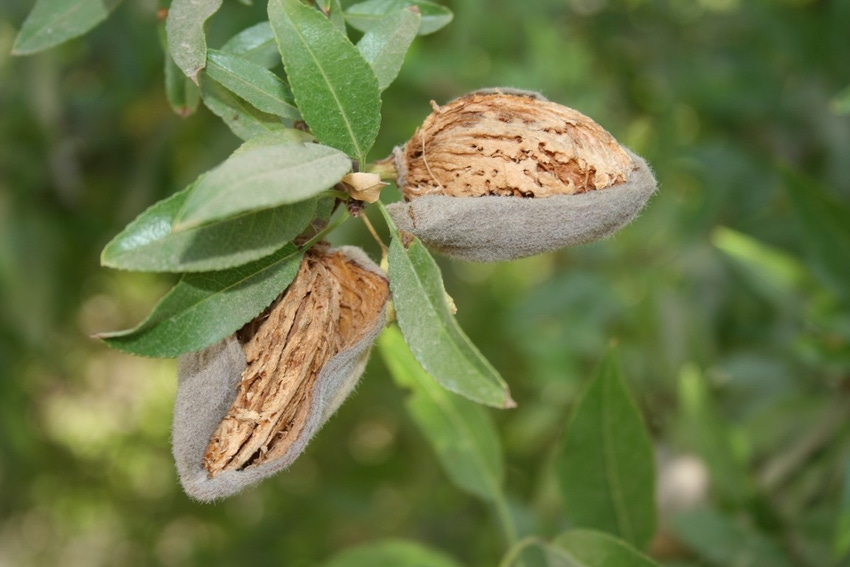March 4, 2015

As March began, the almond bloom in Merced County entered its final phase.
Petals continued to fall from many of the Nonpareil and its pollinator varieties and the Butte-Padre trees were well into bloom.
“The bloom has moved pretty quickly,” reports David Doll, University of California Cooperative Extension farm advisor for Merced County.
“We’re a good two weeks ahead of our usual pace.”
While that increases the risk of frost damage to the developing nuts, it’s not the only threat to this year’s Merced County crop, Doll notes. The quality of the bloom has varied widely throughout the county, depending on location and soil types.
“In some orchards, the bloom looked beautiful, but in others leaves were already pushing,” Doll says. “When driving around the county, I’ve definitely seen more acreage with green leaves than last year. But, it’s not the majority of fields by any means.”
Yield drop?
For those affected orchards, however, its cause for concern, he says. Buds pushing leaves instead of flowers point to a possible drop in production this year.
Doll traces the cause back to several drought-related stresses on the trees. One, of course, is lack of irrigation water, as deliveries of surface water have been sharply reduced, if not curtailed all together.
To help compensate, some growers have pumped more groundwater, which contains higher levels of salt, onto their fields. Meanwhile, with limited winter rainfall to leach out the salts, salinity levels of the soil in the root zones have risen.
“For sandier soils in Merced County, anywhere from 10 to 11 inches of rain over the winter would probably be enough to flush out the salts accumulating in the root zone from the groundwater,” Doll says.
“But, we haven’t had that much in the past four winters.”
Less water, more salt = tree stress
Less water and more salts add up to stress on the tree. Both salt and water stress have the same ultimate impact, he notes.
High soil-salinity levels in the root zone decrease the osmotic gradient, reducing the amount of water that passes from the soil into the roots.
“This stresses the tree and makes it work harder for water,” Doll says.
That stress, in turn, can affect development of the buds that eventually produce a nut crop.
All almond buds form as vegetative or leaf buds the previous year. In August or September, some of these buds begin differentiating into fruit buds. Once these buds receive adequate winter chill, they complete the development of their flower parts, leading to bloom the following spring.
“But stress on the tree at a critical time in bud development, between about mid-August and mid-September, can cause buds that otherwise would develop into floral buds to remain as vegetative buds.”
That’s what Doll thinks occurred last year due to stress on the trees from limited water uptake and salt burn. The combination of water stress and the extra energy the trees expended taking up water from the high-saline soils reduced the amount of carbohydrates available for nut development.
As a result, more vegetative buds would remain to produce leaves rather than becoming floral buds and, eventually, producing nuts. And that, he says, would explain the fewer flowers and greater number of emerging leaves some growers saw during this year’s bloom.
Crop estimate difficult
“A lower bloom density on the trees usually means a smaller crop,” Doll says. “But, in a form of compensation, the tree sets a higher percentage of flowers. This makes it difficult to estimate crop size at bloom.”
Typically, an early bloom means an earlier progression of other crop development stages, including leaf-out and harvest. By increasing the length of the irrigation season, this only adds to the effect of restricted water supplies.
“Even with an early harvest, we’ll be seeing the impacts of this continuing severe drought,” Doll says.
“Unless we have miracle rains in March, this looks to be a tough year for almond growers and all farmers throughout the state.”
You May Also Like




